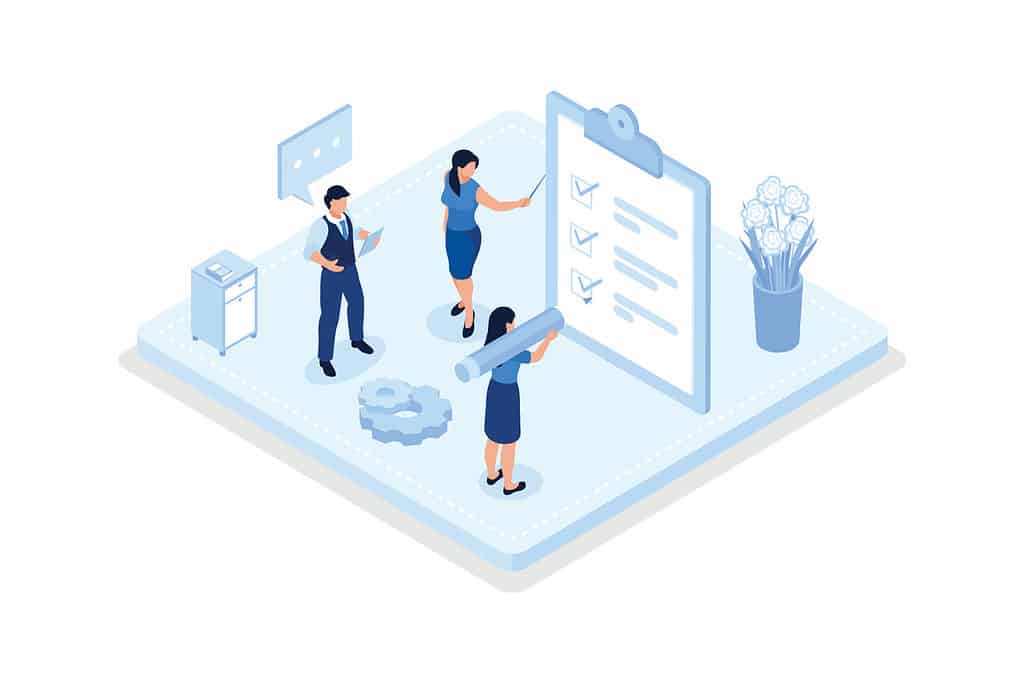Ultimate Tech Stack Guide for Small Business

Introduction: The Importance of a tech stack for small business
Overview of the importance of a tech stack for small businesses
Welcome to our guide for small businesses on setting up a tech stack! Whether you’re just getting started or looking to revamp your current technology setup, this guide will provide you with the information and tools you need to make informed decisions and build a tech stack that will help your business thrive.
A tech stack is the collection of technologies and tools that a business uses to build, run, and manage its operations. It can include everything from programming languages and databases to cloud services and marketing tools. And for small businesses, having the right tech stack in place can mean the difference between success and failure.
Think about it this way: a tech stack is the backbone of your business. It helps you keep track of your customers, manage your inventory, process payments, and so much more. In short, a well-designed tech stack can make your life as a small business owner much, much easier.
The good news is that there are plenty of technology options available to small businesses today, and many of them are tailored specifically to the needs of small businesses. Whether you’re looking for e-commerce solutions, customer relationship management tools, or data analytics platforms, there is something out there that will work for you.
The key to building a successful tech stack is to start by identifying your specific business needs. What are the key functions and processes that your business needs to perform in order to succeed? How can technology help you achieve these goals more efficiently and effectively? Once you have a clear understanding of your needs, you can begin researching and evaluating different technology options to find the best fit for your business.
So don’t be intimidated by the idea of setting up a tech stack. With the right approach and the right tools, you can build a tech stack that will help your business grow and thrive. Let’s get started!
Brief explanation of what a tech stack is and its components
The good news is that there are plenty of technology options available to small businesses today, and many of them are tailored specifically to the needs of small businesses. Whether you’re looking for e-commerce solutions, customer relationship management tools, or data analytics platforms, there is something out there that will work for you.
The key to building a successful tech stack is to start by identifying your specific business needs. What are the key functions and processes that your business needs to perform in order to succeed? How can technology help you achieve these goals more efficiently and effectively? Once you have a clear understanding of your needs, you can begin researching and evaluating different technology options to find the best fit for your business.
So don’t be intimidated by the idea of setting up a tech stack. With the right approach and the right tools, you can build a tech stack that will help your business grow and thrive. Let’s get started!

Identifying Your Business Needs: The Key to a successful Tech Stack
When it comes to building a tech stack, the most important step is identifying your specific business needs. This will help you narrow down your search and ensure that you choose the right tools and technologies for your business. Here are a few tips to help you get started.
Understand the Core Functions and Processes of Your Business
Start by taking a step back and looking at your business as a whole. What are the key functions and processes that your business needs to perform in order to be successful? For example, if you run an e-commerce store, you’ll need tools and technologies that can help you manage your inventory, process payments, and handle shipping and returns. Or if you are a service-based business, you’ll need tools that can help you manage customer interactions, schedule appointments, and track project progress.
Identify Your Pain Points
Another way to identify your business needs is to look at the areas where you’re currently experiencing pain points or inefficiencies. What are the processes that are taking up too much of your time or causing you problems? For example, if you’re manually entering customer data into multiple different systems, a customer relationship management tool could help streamline the process and eliminate errors.
Think About Your Future Goals
It’s also important to think about your future goals for your business and how technology can help you achieve them. For example, if you plan to expand your business in the next few years, you’ll want to choose tools and technologies that can scale with your growth.
Prioritize
Once you’ve identified your business needs, prioritize them. You may not be able to address all of your needs right away, so it’s important to start with the most critical and work your way down the list.
By taking the time to understand your business needs, you’ll be better equipped to make informed decisions when it comes to choosing the right tools and technologies for your tech stack. And the best part is that once you’ve identified your needs and implemented the right solutions, you’ll start to see improvements in your business processes, efficiency and productivity.
So, don’t be discouraged, take your time and conduct a thorough analysis of your business needs, it will pay off in the long run.

Researching and Evaluating Technology Options: Finding the Right Fit for Your Business
Once you’ve identified your business needs, it’s time to start researching and evaluating different technology options. This can seem like a daunting task, but with the right approach, you’ll be able to find the tools and technologies that are the best fit for your business.
Familiarize Yourself with Common Technology Options
The first step is to familiarize yourself with the different types of technology that can be used in a tech stack. Some common options include:
- Programming languages such as Python, JavaScript, and Java
- Databases such as MySQL, PostgreSQL, and MongoDB
- Cloud services such as Amazon Web Services, Microsoft Azure, and Google Cloud Platform
- E-commerce platforms such as Shopify, Magento, and BigCommerce
- CRM tools such as Salesforce, Hubspot, and ZohoCRM
- Marketing Automation tools such as Marketo, Pardot, and MailChimp
- Analytics platforms such as Google Analytics, Mixpanel, and Tableau
Research and Evaluate Specific Technology Options
Once you have a good understanding of the different types of technology available, it’s time to start researching and evaluating specific options. There are a few key things to keep in mind when doing this research:
- Look at pricing: Make sure to take into account the costs of each option and how they fit into your budget.
- Consider scalability: Choose tools and technologies that can grow with your business, not just the present needs.
- Evaluate ease of use: Consider how easy it is to learn and use each technology.
- Check out reviews and testimonials: This can help you get a sense of how well the technology works for other businesses and users.
Compare and Contrast
Once you’ve narrowed down your list of options, it’s time to compare and contrast them. Make a matrix or a table with the features and functionalities of each tool, pricing, scalability, ease of use, and customer reviews. This will make it easier to see which technology is the best fit for your business.
Keep in mind that building a tech stack is not a one-time decision, the options you choose today should be able to adapt to the future changes of your business. So, choose wisely, it’s ok to take your time and make sure you’re picking the right tools for the job.
Research and evaluation may seem like a lot of work upfront, but it’s well worth the effort. By taking the time to research and evaluate different technology options, you’ll be able to build a tech stack that will help your business grow and thrive.

Building and Implementing Your Tech Stack: Putting it All Together
Now that you’ve done the research and evaluated your options, it’s time to start building and implementing your tech stack. This is the fun part where you get to bring everything together and start seeing the benefits of your hard work.
Choose and Implement Specific Technologies
Based on your research and evaluation, choose the specific tools and technologies that you’ll use in your tech stack. Keep in mind that it’s not necessary to use every technology that you’ve researched, only the ones that align with your business needs.
When implementing these technologies, be sure to follow the best practices for integration and compatibility. You’ll want to make sure that everything is working together seamlessly and that there are no conflicts or issues. This may require some experimentation and troubleshooting.
Test and Troubleshoot Your Tech Stack
Before you deploy your tech stack, it’s important to test everything to make sure that it’s working as intended. This will give you an opportunity to catch and fix any issues or bugs before they become a problem.
Testing should cover different scenarios and use cases, try to break the stack and see how it behaves. This will help you identify and fix any vulnerabilities, security issues, or other problems that could arise later on.
Integration: Making sure everything works together seamlessly
Building a tech stack is not just about choosing the right technologies but also making sure that they work together seamlessly. Integration is the process of combining different technologies and making sure they function as one cohesive system.
Here are a few tips to keep in mind when integrating your tech stack:
- Use APIs and Integration Platforms: One way to ensure smooth integration is to use application programming interfaces (APIs) and integration platforms. These tools allow different systems to communicate and share data with each other in a standardized way, reducing the likelihood of conflicts or compatibility issues.
- Test and Validate: During the implementation process, make sure to validate the integration by testing it thoroughly. Test the different scenarios, use cases and edge cases to ensure that everything is working together as intended.
- Monitor and Troubleshoot: After deployment, monitoring the integration is also very important. Keep an eye on the system’s performance, fix bugs and issues, and troubleshoot any problems that arise.
- Keep it Simple: One of the key to successful integration is to keep it simple. Avoid over-engineering or using unnecessary technologies. Instead, choose a limited number of tools that are tailored to your specific business needs.
- Plan for future upgrades and expansion: When choosing the technologies and planning the integration, it’s important to think about the future growth and expansion of the business. Make sure that the integration is scalable and flexible enough to adapt to the changing needs of the business.
By following these tips and best practices, you’ll be able to ensure that your tech stack is integrated seamlessly, and it’s working together as a cohesive system. This will help you to reduce technical debt and increase the performance and efficiency of your business.
Deploy Your Tech Stack
Once everything has been tested and is working as expected, you can deploy your tech stack. This is the point when you put your tech stack into production and start using it for your business operations.
Celebrate Your Success!
Now that your tech stack is up and running, it’s time to celebrate! You’ve done the research, made informed decisions, and implemented a tech stack that will help your business grow and thrive. Don’t forget to keep in mind that the process of building a tech stack is not a one-time event, you will need to keep monitoring and maintaining it as your business evolves.
Building and implementing your tech stack may seem like a daunting task, but with the right approach and a bit of hard work, you’ll be able to create a tech stack that is tailored to the specific needs of your small business. This is a huge achievement and you should be proud of yourself.

Managing and Updating Your Tech Stack: Keeping Your Tech Stack Running Smoothly
Building and implementing a tech stack is only the first step in the process. To ensure that your tech stack continues to support your business, it’s important to keep it up-to-date and manage it effectively. Here are a few tips to help you do just that.
Review and Monitor Regularly
It’s important to review your tech stack regularly to ensure that it’s still meeting your business needs and performing as expected. This includes monitoring system performance, security, and compliance. By regularly monitoring your tech stack, you’ll be able to identify and address any issues or potential problems early on, before they become major problems.
Plan for Upgrades and Updates
Technology is always changing and evolving, so it’s important to plan for upgrades and updates. This will help you to take advantage of new features and functionality, and keep your tech stack current and secure.
Budget for Maintenance and Support
Managing a tech stack can be costly, so it’s important to budget for maintenance and support. This includes the cost of updates, upgrades, and troubleshooting. It’s also a good idea to have a contingency plan in place in case of unexpected issues or failures.
Collaborate with Experts
Managing a tech stack can be complex, so it’s important to collaborate with experts who can help you troubleshoot problems, provide guidance, and offer best practices. This can include IT professionals, developers, and vendors.
By following these tips, you’ll be able to manage your tech stack effectively and keep it running smoothly. Regularly monitoring, planning for upgrades and updates, budgeting for maintenance and support, and collaborating with experts will help ensure that your tech stack is always able to support your business and keep it moving forward.
Remember that, just like your business, your tech stack is a living entity that needs constant attention and care. By taking the time to manage and update it properly, you’ll be able to ensure that it continues to serve your business well, now and in the future.

Conclusion: Achieving Success with Your Tech Stack
We hope that this guide has provided you with the information and tools you need to set up a tech stack that will help your small business thrive. A well-designed tech stack is essential for any business, and it can make a huge difference in terms of efficiency, productivity, and growth.
To summarize, the key steps to building a successful tech stack are:
- Identifying your business needs
- Researching and evaluating technology options
- Building and implementing your tech stack
- Managing and updating your tech stack
By following these steps, you’ll be able to build a tech stack that is tailored to the specific needs of your business, and that will help your business grow and thrive.
Remember that building and maintaining a tech stack is a continuous process and it’s important to review, upgrade and monitor it regularly, also budgeting for it.
Thank you for reading this guide, and good luck on your tech stack journey! We’re confident that with the right approach and the right tools, you’ll be able to create a tech stack that will help your business achieve success.
As a final note, we recommend you to keep learning and growing with the constant changing technology, this guide is a starting point and there are many more resources and communities out there ready to help you.
We wish you all the best on your tech stack journey and your business!







